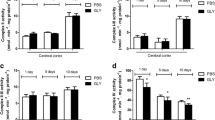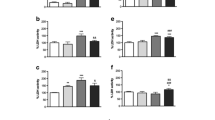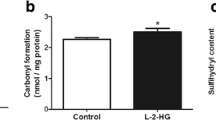Summary.
Glutaryl-CoA dehydrogenase deficiency (GDD), which is one of the most frequent organic acid disorders, is characterized by a specific age- and regional-dependent neuropathology. We hypothesized that the distinct brain damage in GDD could be caused by the main pathologic metabolites, the organic acids glutaric (GA) and 3-hydroxyglutaric (3-OH-GA) acids, through an excitotoxic sequence. Therefore, we investigated the effects of 3-OH-GA and GA on primary neuronal cultures from chick embryonic telencephalons. Here we report that 3-OH-GA and GA decreased cell viability concentration- and time-dependently, which could be only totally prevented by preincubation with MK-801, ifenprodil and NR2B antibodies. Furthermore, cell viability decreased in parallel with the increasing expression of NR2B subunit on cultured neurons from 2nd to 6th DIV. We conclude that GA and 3-OH-GA act as excitotoxic organic acids (EOA) specifically through NR1/NR2B and that the extent of induced neurotoxicity is dependent on NR1/NR2B expression during maturation.
Similar content being viewed by others
Author information
Authors and Affiliations
Additional information
Received February 5, 1999, Accepted May 1, 1999
Rights and permissions
About this article
Cite this article
Kölker, S., Ahlemeyer, B., Krieglstein, J. et al. Cerebral organic acid disorders induce neuronal damage via excitotoxic organic acids in vitro . Amino Acids 18, 31–40 (2000). https://doi.org/10.1007/s007260050003
Issue Date:
DOI: https://doi.org/10.1007/s007260050003




